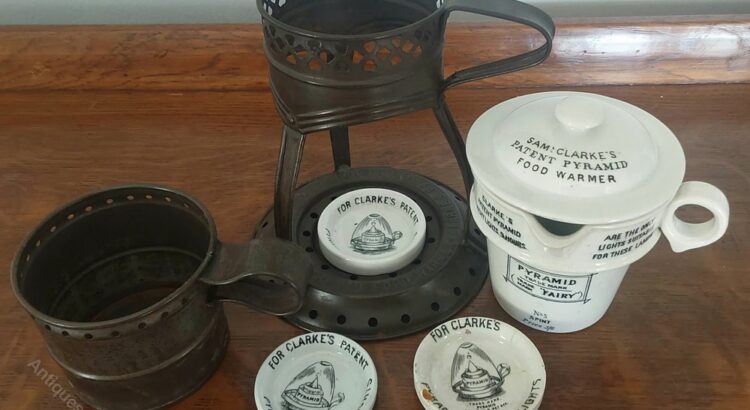When traversing the dangers of the modern supermarket, there’s no escaping the baby food section. This colourful creature always lurks strategically close to the checkouts, so that even customers without a need for baby food know its appearance, products and brands. The normalcy of our current form of baby food contrasts sharply with the contentious history of these foods. Dietitians and doctors have long debated what constitutes a healthy diet for our youngest ones. A particularly heated topic was milk. On the one hand it was seen as vital to the survival of infants. On the other hand ‘tainted’ milk was often cited as a cause for infant mortality. In the 19th century, with the advent of industrial production, people were swamped with products designed to prepare, preserve or substitute milk. From the first category, of preparationists, came Samuel Clarke with his ‘Pyramid’ food warmer.
Housewives and Hustlers
The Pyramid food warmer was introduced in the 1870’s, in a period of rapid industrial innovation as well as changes in regular households. Parents desired a more convenient life at home, and this went hand in hand with inventors and entrepreneurs looking to capitalise on these desires. Samuel Clarke from London jumped at the opportunity and fiercely marketed his for-home-use products. From watch holders, to inhalers, to materials used to convert chandeliers and candlesticks (so that they could hold candles produced by him). Clarke’s candles were marketed as The Burglar’s horror, as they were mainly used for nightlights.
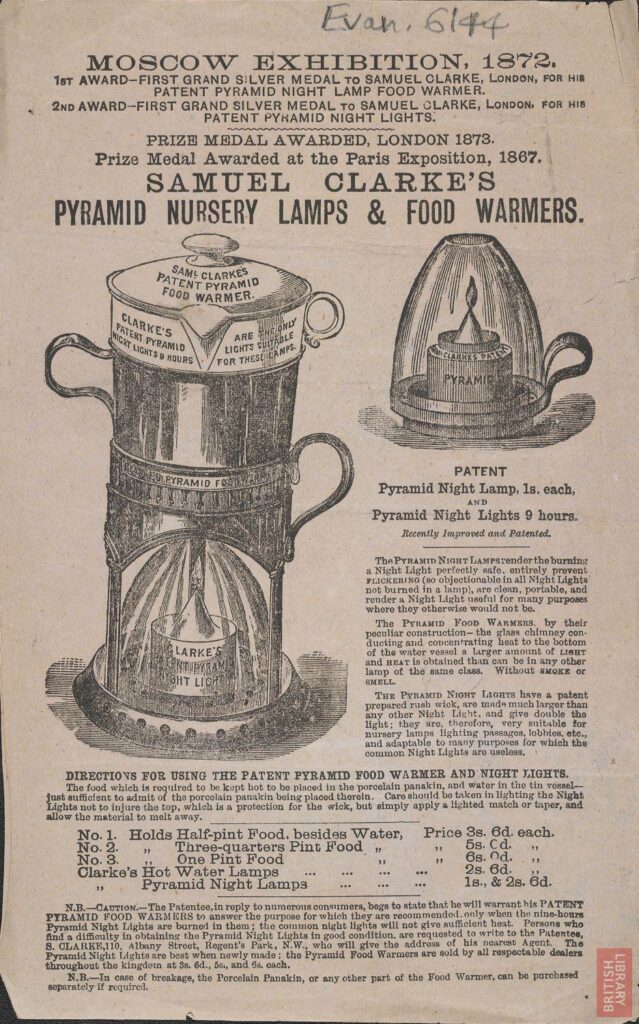
Clarke obviously didn’t forget about the heat emanating from his candles, and thus incorporated them into a food warmer, mainly to satisfy the budding market of baby food. The result was a strangely named tower of stacked items, the Pyramid food warmer. Food could be warmed by allowing a candle to heat a tin of water. A ceramic jug containing food could then be placed atop the tin, thus warming the food. The warmer was marketed mostly towards heating milk and pap, milk was seen as the quintessential baby food.
Doctors of the period prescribed a diet consisting strictly of milk towards infants, a product that required some care as spoiled milk, often called ‘tainted milk’, was known as a leading cause in infant mortality. Despite this, breastfeeding was in remission. In the 17th century mothers still breastfed their children into their second year, but by the 19th century would start weaning them at just 12 months old. Yet children were still expected to have a lot of milk in their diet up to their second year. People thus required an instrument to safely prepare milk at home. Pasteurisation was already a known process in the 18th century, and by the 19th century it became a widely recommended practice, if still a bit in its infancy. This can, in part, be attributed to Clarke’s Pyramid food warmer.
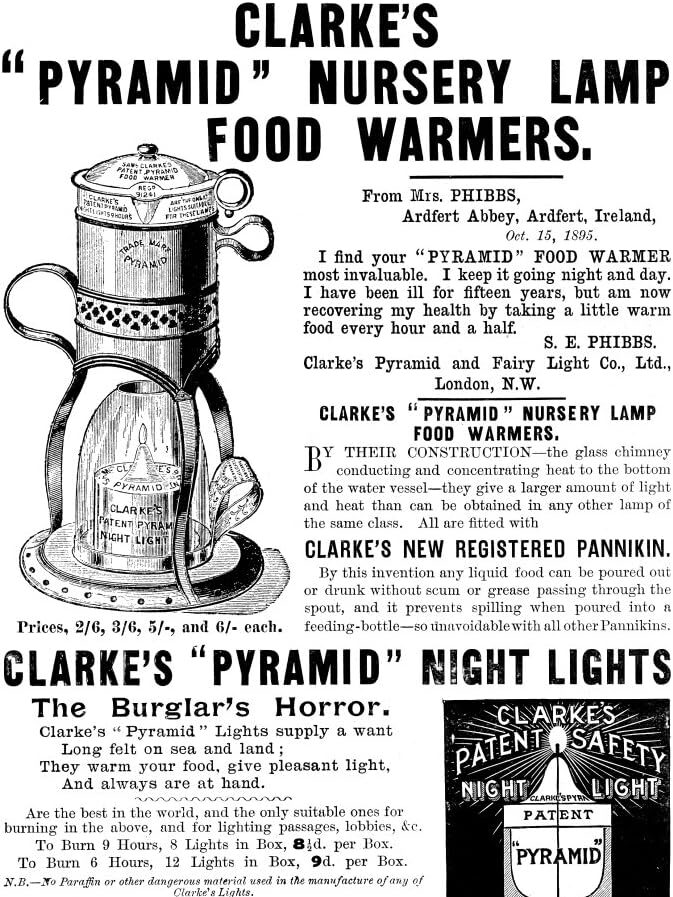
A succesful Pyramid scheme
Many advertisements displaying the food warmer give it the apt title of ‘Pyramid Nursery Lamp Food-Warmer’. It was marketed as indispensable for any parent. One advertisement shows a mother feeding her baby in bed at night, and another advertisement has the text ‘Used by Her Majesty the Queen’ above the Sphinx and pyramids at Giza. Apparently as ‘the mother of the nation’ she also had use for a food warmer. Despite its grand presentation, the design of the food warmer was also meant to convey its use as a common household item. The ceramic jug at the top of the structure didn’t just look at home amongst all other 19th century earthenware, but also contained a short poem of comforting words:
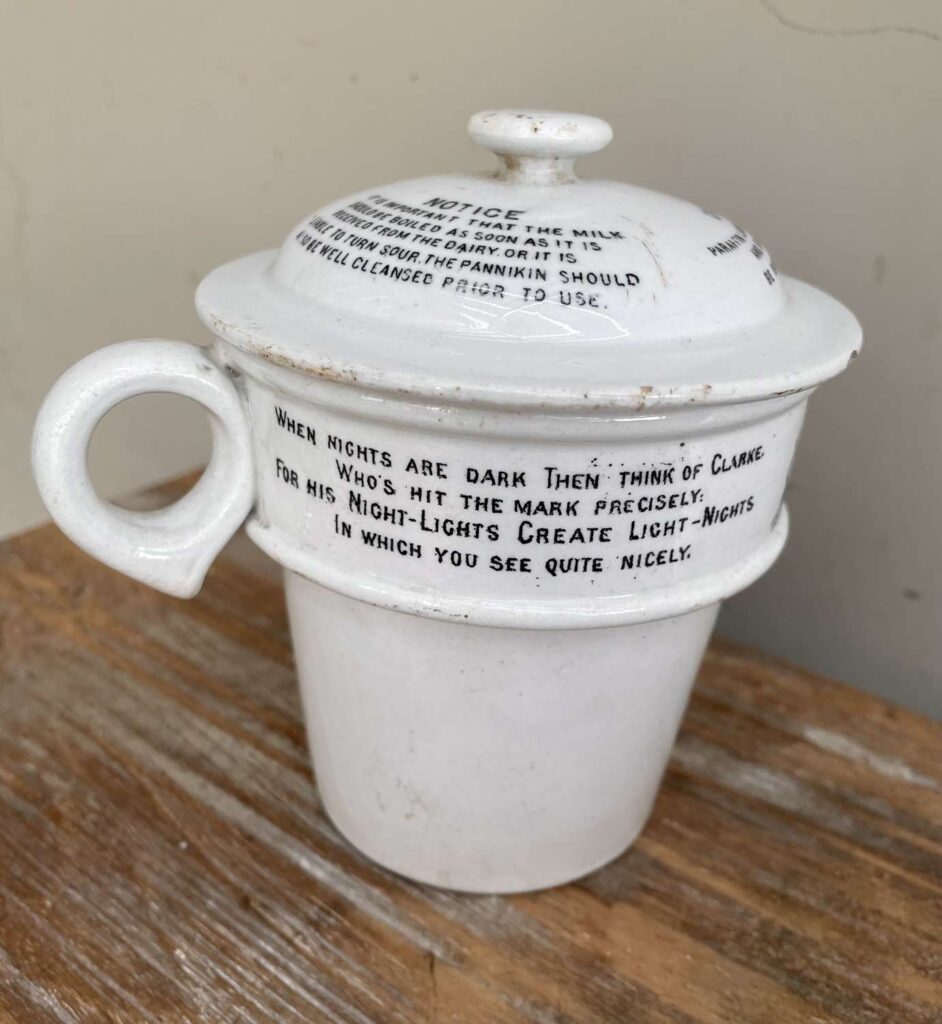
When nights are dark then think of Clarke
Who’s hit the mark precisely
For his night-lights create light-nights
In which you can see quite nicely
Here we can see its use as a lamp being highlighted on a part used for warming food, a beautiful intertwining of its advertised double role. The Pyramid food warmer was in common usage, shown by the extensive amount of advertisements, lack of rivalling products, and that many of them can still be found today. One can find many of the individual parts, or even the whole Pyramid, for sale on auction sites. A little tip just in case you have been swayed by
Clarke’s comforting poem, or wish to emulate Queen Victoria (apparently).
A less than stellar design
The 1800’s also produced less successful innovations regarding baby food, specifically milk. One such innovation was responsible for a wave of ‘tainted milk’: a baby bottle with an elongated straw topped with a nipple. Their acquired nickname of ‘Murder Bottles’ might give a suggestion as to how beneficial these were to a baby’s diet. The straw was very difficult to clean, with advertisers even suggesting not bothering to clean the straw for days on end, as that was deemed unnecessary by them. This resulted in the straw becoming a utopia for bacteria. Doctors quickly became aware of the danger and discouraged the bottles’ use, but marketing had already done its job and had made the bottles a sign of sophistication for a household, so they persisted. This shows us that the baby food market was already becoming a force to be reckoned with.
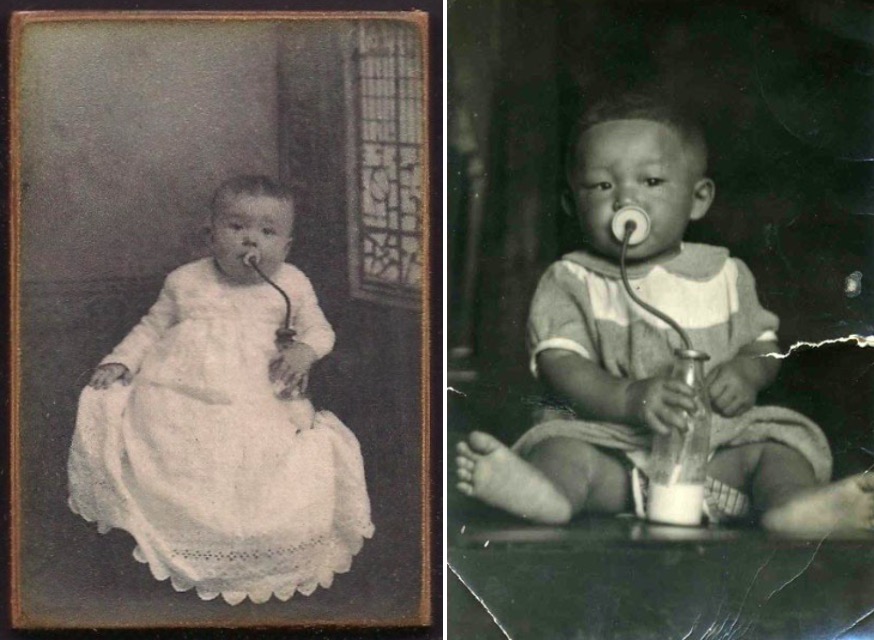
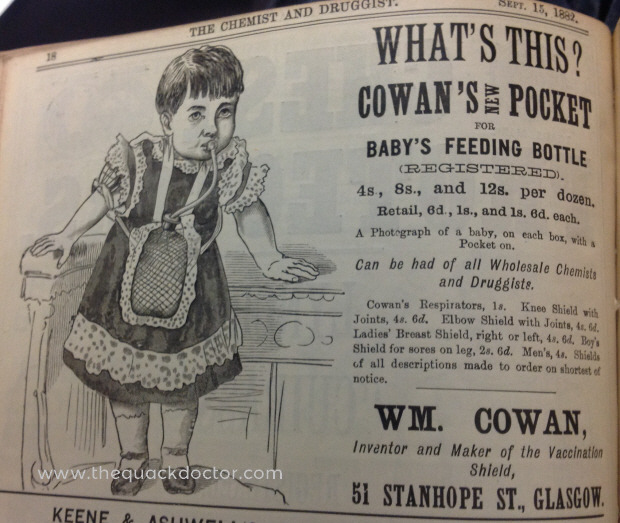
September 1882. Photo by The Quack Doctor.
Leaving milk behind
Clarke’s Pyramid food warmer represents this transitional period. A time in which inventions jumped at people from left and right, some with actual benefits, others coming with unforeseen dangers, or even outright quackery. Households were increasingly seeking, even demanding, a more comfortable lifestyle, and the industry was trying everything to adapt to their wants. Milk still reigned supreme when it came to baby food, but soon, in the early 20th century, commercially produced baby foods containing more than milk would come to the fore. Thus bringing our story back from Clarke’s Pyramids all the way up to our inescapable baby food aisles.
Written by: Leo Rasch
Further Reading
- Bentley, Amy, Inventing Baby Food: Taste, Health, and the Industrialization of the American Diet (California, 2014).
This book is for those with a strong appetite, tracing the history of baby food from the Industrial Revolution to the present day. - Sayer, Karen, ”Illuminating Women: The Case of Candles in the English Home, 1815-1900”, in: ”Women and Energy”, edited by Abigail Harrison Moore and Ruth Sandwell, RCC Perspectives: Transformations in Environment and Society 2020, no. 1, pp. 31-35.
A smaller course, giving concise insight into the domestic use of candlelights.
